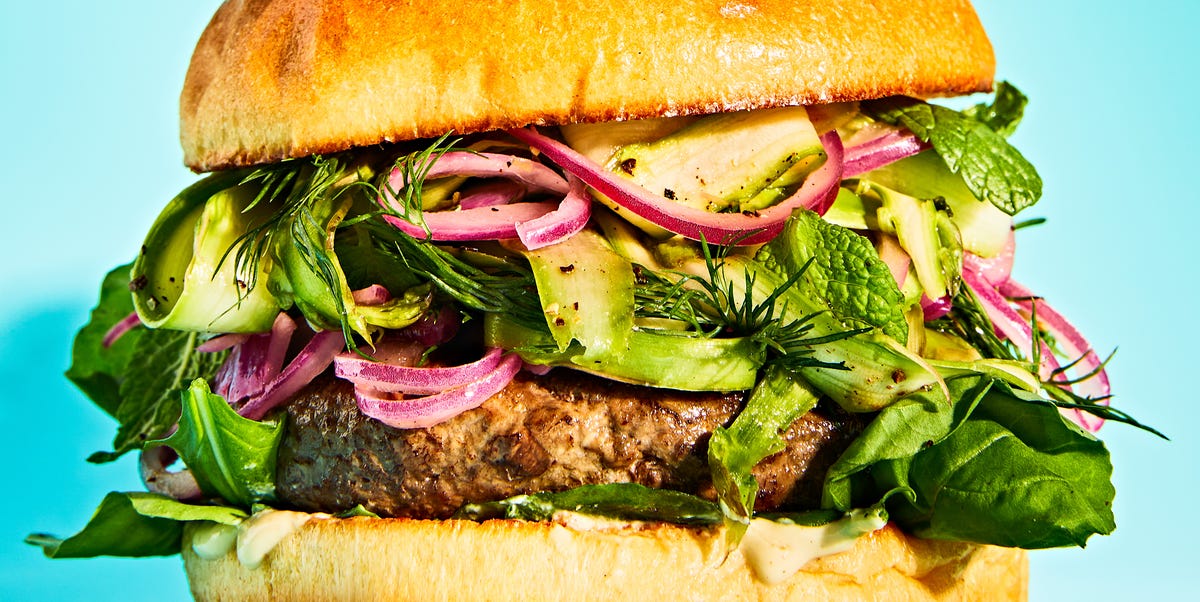I’ll say it: I don’t like protein powder. I don’t like the taste of the artificial sugars, or that it’s hard to blend out and disguise in my drink, or that it sometimes upsets my stomach.
But, as an active person, I really ought to be striving for anywhere between 1.2 to 1.5 grams of protein per kilogram of body weight per day to support muscle and tissue repair, immune health, metabolism, hormones, and more. (FYI, your weight in kilograms is a little less than half your weight in pounds.) For most people, that’s close to 100 grams of protein per day, or anywhere between 25 and 30 grams per meal plus high-protein snacks. It’s a lot to figure out, and, if you ask the internet, feels like a full-time job.
Meet the experts: Dana White, RD, is a sports dietitian and athletic trainer. Nicole Lund, RDN, is a sports dietitian and athletic trainer at NYU Langone.
That’s why so many people turn to powders or bars to help them reach their protein goals. They’re a convenient and quick way to get a protein boost, especially on a day when you don’t feel like eating another chicken breast. For people like me, though, who don’t want to down protein shakes and can’t quite get on board with the taste of a David bar, ideally we’d avoid the supplements and get enough protein from the real, unprocessed thing.
The question is: Is it possible? Here’s what nutritionists think.
Yes, you can get enough protein without a supplement—and it might even be better for you.
It might feel like an unattainable task, but you totally can get enough protein from your diet alone. “I definitely think it’s doable,” says Dana White, RD, a sports dietitian and athletic trainer. Nicole Lund, RDN, a sports dietitian and athletic trainer at NYU Langone, agrees.
In fact, this is the ideal scenario. Protein-rich foods (think: meats, eggs, beans, and soy) all have *other* nutrients in them. For example, 100 grams of chickpeas (about one third of a cup) might have 20 grams of protein, but it also has 12 grams of fiber, and minerals like iron, calcium, and magnesium, per a study in Nutrients. So, when you’re getting your protein from food, you’re also getting a bunch of other beneficial nutrients. “It’s not an even swap between a protein shake and a protein-rich meal,” White says. “You have to pay attention to what all the components have to offer.”
If you’re getting your protein from meat, you’re also getting a “complete” source of protein, which means that it contains all nine essential amino acids. Amino acids are the building blocks of protein, so they’re critical to all the good stuff that protein does in your body. There are 20 of them—but humans can’t produce nine of them on our own, so we have to get them through our diet. (One important one? Leucine, which is the main driver of muscle-building, says White.)
If you’re vegetarian or vegan, getting all of the essential amino acids might require a little bit of thought because many plant sources aren’t complete proteins, says White. Still, it doesn’t take much to get everything you need. Just vary the plant-based protein sources you’re eating and prioritize ones that do have all essential amino acids—including soy, chia, hemp, buckwheat, quinoa, and pistachios. If you do that, she says, you definitely don’t need to track each individual amino. “No way should people be trying to track or isolate all those individual amino acids.”
Protein supplements do come in handy in certain instances, though.
Protein powders are everywhere for a reason: They’re super convenient. Running low on time but need to get some protein in after a workout? Fix yourself a shake. Need a quick boost between work and your Pilates session? Grab a protein bar. They’re there to help in times of need, but they shouldn’t be used as a meal replacement, says Lund.
They also come in handy in times when you’re sick or recovering, adds Lund, who used powders when her appetite was low following a surgery, or for older people who have increased protein needs.
And, of course, if you are someone who is consistently below your protein goals and are struggling to eat more, supplementation can help get you there. When it comes to getting a complete source of protein, supplements are also generally reliable, says White. Just like their real-food counterparts, animal-based powders like whey and casein are complete sources. Meanwhile, plant-based powders are often blends of multiple foods for the exact reason that they can pack all nine essential amino acids into one powder. You can make sure it’s a complete source just by checking the label.
Nutritionist Tips For Getting Enough Protein Without Supplements
Get the Women’s Health Protein Playbook
1. Track your intake for a few days.
First, get yourself an estimate of just how much protein you’re eating already, says Lund. Track your protein intake for a few days. This will not only help you learn about all the different ways you’re getting it and identify any areas where you can amp up the protein.
“There’s ways to supercharge what you’re already eating,” Lund says. For example: that oatmeal you have for breakfast? Try adding nuts, nut butter, flaxseed, chia seed, or hemp seeds for some extra protein. Or, look for places you can swap rice for a higher protein option like quinoa.
2. Take a hard look at your snacks.
One of the easiest targets for sneaking in more protein is your snacks. “Instead of eating just a carb-oriented snack like a piece of fruit, can you add crunchy edamame or nuts or something that has a little bit of protein, even if it’s not a lot?” says Lund. You can also go for something like veggies and hummus or the fan-favorite cottage cheese.
“All those opportunities throughout the day can help,” says Lund.
3. Spread your intake throughout the day.
Consider this your reminder that you should be eating protein throughout your entire day, not just at dinner (which is when the majority of Americans eat theirs). This is better for body function and for being able to eat enough of it.
One way to make your protein goal more manageable is to spread it out and think about eating 25 to 30 grams at each meal, says White. It’s a lot easier to hit these smaller targets over multiple meals then feeling like you need to play catch up at the end of the day.
A pro tip from White: plan to get 25 to 30 grams after a workout. This makes sure your body gets the nutrients it needs after a sweat sesh (and can help start repairing those muscles), but it also immediately takes a chunk of your protein requirements off your plate.
4. Think beyond chicken.
When you think about protein sources, you might be thinking of the same foods again and again—particularly animal proteins. (Guilty!) But keep in mind that you’re likely getting protein from plenty of different sources throughout the day. “There’s protein in such a wide variety of foods,” says White. Animal proteins might pack the most per ounce, but that doesn’t mean you can’t add to your daily tally with nuts, cheeses, yogurts, or even bread.
Need a little help? Women’s Health+ has you covered. Check out the WH+ Protein Playbook, which has a bunch of high-protein recipes and breaks down everything you need to know about leveling-up your protein intake. Or, if you’re looking for an all out meal-prep plan, go for the WH+ High-Protein Meal Prep Manual, which gives you a three-week breakfast, lunch, and dinner plan.
5. If you don’t hit your protein goal one day, move on.
In case you needed to hear this: you don’t need to hit your protein goal every day, says White. “I think people sometimes take that estimate of that gram goal way too literally, and they drive themselves insane, which you really don’t have to do as long as you’re in that neighborhood,” says White. You don’t want to be super super far below it, and you also don’t want to be really, really high above it.”
While on your protein journey, you might have days when you miss the mark. That’s okay, she says. You don’t need to pile on extra the next day; you can just move on. Really, it’s all about doing your best and finding ways to sneak in more protein throughout your day—that should bring you pretty darn close to your goal. And, if you find out that you’re consistently far below it, then you can consider a supplement.
Olivia Luppino is an editorial assistant at Women’s Health. She spends most of her time interviewing expert sources about the latest fitness trends, nutrition tips, and practical advice for living a healthier life. Olivia previously wrote for New York Magazine’s The Cut, PS (formerly POPSUGAR), and Salon, where she also did on-camera interviews with celebrity guests. She’s currently training for the New York City marathon.
Read the full article here




